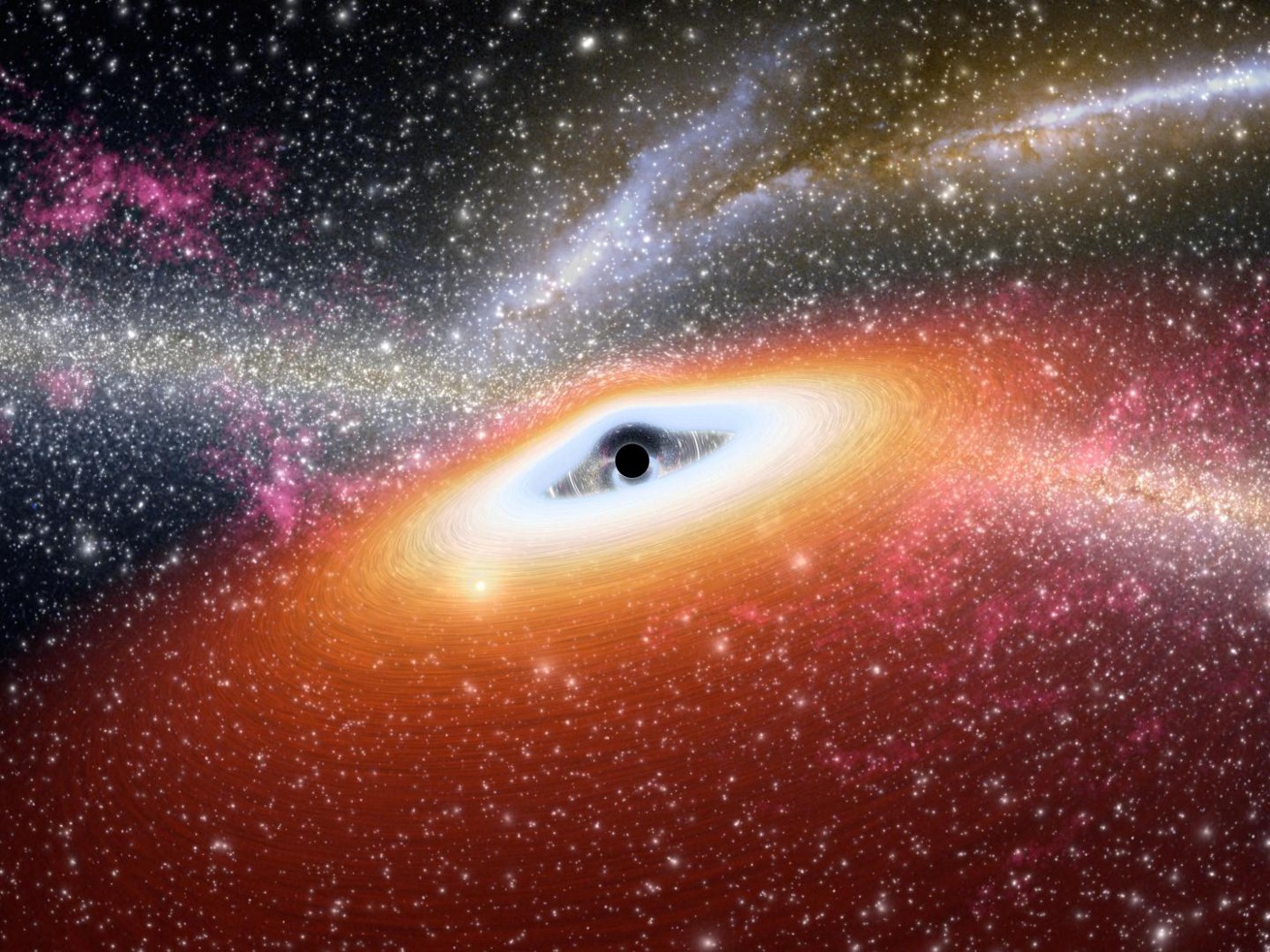The problem seems to be one of time, the Universe is 14 billion years old, and recent observations seem to confirm that such black holes were already present when it was just 800 million years old — thus in its relative infancy. How could these black holes have accrued so much matter to supermassive status in such a, relatively, short space of time? This lingering question poses a problem for our very understanding of the evolution of such spacetime events. Now, a paper published in The Astrophysical Journal suggests an answer. Authors Lumen Boco, a PhD student, and his supervisor Andrea Lapi, coordinator of the Astrophysics and Cosmology group at Scuola Internazionale Superiore Di Studi Avanzati (SISSA), Trieste, Italy, use a model initially theorized by colleagues to suggest a very fast formation process in the initial phases of the development of the supermassive black holes. The team’s work suggests that supermassive black holes grow rapidly due to the merging of stellar compact remnants like neutron stars and smaller stellar-mass black holes. The team’s results seem to confirm mathematically that supermassive black holes could have existed in the early Universe shortly after the big bang, reconciling the timing required for such rapid growth with the constraints arising from the age of the Universe.
The cosmic spider growing fat at the center of a galactic web
Researchers conducted their study by examining observational evidence of the growth of supermassive black holes in the central regions of galaxies which resemble early galaxies. These early galaxies, which were the progenitors of elliptical galaxies such as our own Milky Way, had high gas content and intense rates of star formation. “The biggest stars live a short time and very quickly evolve into stellar black holes, as large as several scores of solar masses; they are small, but many of them form in these galaxies,” says Lapi. The dense gas around these galaxies has an extremely powerful dynamic friction effect causing smaller black holes to quickly migrate to the center of the galaxy. Once there, many of these black holes merge to form the seed of a supermassive black hole. “According to classical theories, a supermassive black hole grows at the center of a galaxy capturing the surrounding matter, principally gas, ‘growing it’ on itself and finally devouring it at a rhythm which is proportional to its mass’” Boco says. “For this reason, during the initial phases of its development, when the mass of the black hole is small, the growth is very slow. To the extent that, according to the calculations, to reach the mass observed, billions of times that of the Sun, a very long time would be required, even greater than the age of the young Universe.” Yet, the team’s study showed that the process can progress much more quickly than this. “Our numerical calculations show that the process of dynamic migration and fusion of stellar black holes can make the supermassive black hole seed reach a mass of between 10,000 and 100,000 times that of the Sun in just 50–100 million years,” Lapi explains. “[At this point] the growth of the central black hole according to the aforementioned direct accretion of gas, envisaged by the standard theory, will become very fast, because the quantity of gas it will succeed in attracting and absorbing will become immense, and predominant on the process we propose.” The researchers add that the fact the process begins from such a big seed, their mechanism speeds up the global growth of the supermassive black hole and allows its formation in the early Universe. “In short, in light of this theory, we can state that 800 million years after the Big Bang the supermassive black holes could already populate the Cosmos,” Lapi adds.
Using gravitational waves to ‘watch’ supermassive black hole seeds grow
The researchers have also suggested techniques by which astronomers may test the theory they have put forward. “The fusion of numerous stellar black holes with the seed of the supermassive black hole at the center will produce gravitational waves which we expect to see and study with current and future detectors,” they say. In particular, the duo point to detectors such as LIGO/VIRGO which should be able to identify gravitational waves emitted in the initial phases of supermassive black hole growth. In addition to this, the future Einstein Telescope will not only be able to detect these gravitational waves but should also be able to characterize them. The team also suggest that the space-based interferometer LISA — set to launch in 2034 — could then investigate the later phases of supermassive black hole growth. “This research shows how the students and researchers of our group are fully approaching the new frontier of gravitational waves and multi-messenger astronomy,” concludes Lapi, adding that in particular, their main goal will be to develop theoretical models, like that devised in this case, which serves to capitalize on the information originating from the experiments of current and future gravitational waves. “Thereby hopefully, providing solutions for unresolved issues connected with astrophysics, cosmology and fundamental physics.”
